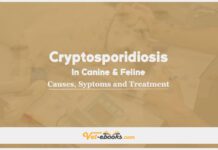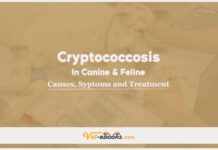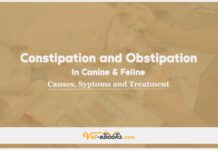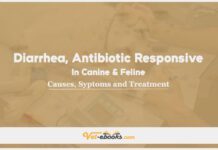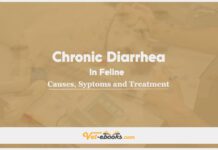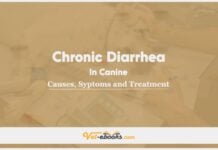Coccidiosis In Canine and Feline: Causes, Symptoms and Treatment
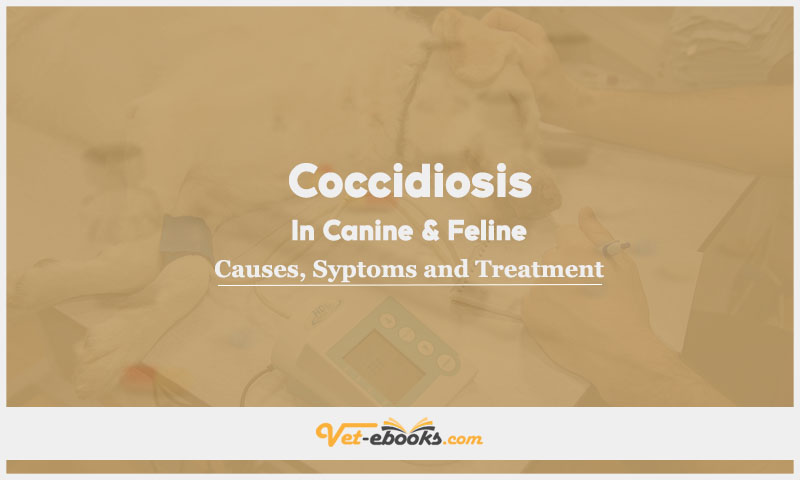
Contents
hide
Overview
Coccidiosis is an enteric infection traditionally linked to(Cystoisospora canis) in dogs and (Cystoisospora felis) in cats, with strict host specificity, meaning there is no cross-transmission between these species.
Causes of Coccidiosis In Canine and Feline
Causes&Risk factors:
- Infected animals can contaminate the environment with the oocysts, primarily Isospora canis in (dogs), but also Isospora ohioensis, Isospora burrowsi, and Isospora neorevolta in dogs, and Isospora felis and Isospora revolta in (cats).
- Damage to the host’s small intestinal enterocytes can result in watery diarrhea, particularly in very young or immunosuppressed animals.
Pathogenesis of Coccidiosis In Canine and Feline
- Isospora spp: Obligate intracellular coccidian protozoa with the potential to infect and cause diarrhea in puppies and kittens.
- Eimeria spp: Not parasitic in dogs or cats. Oocysts can appear in carnivore feces due to coprophagy or ingesting Eimeria-infected prey.
- Both Isospora and Eimeria have direct life cycles, involving fecal-oral transmission. They pass relatively large (32-53 mm), unsporulated oocysts in feces. Autoinfection is common, leading to continual recycling within the intestinal tract and the loss of mucosal lining.
- The exact role of Isospora spp. in causing disease is still uncertain due to limited studies on pathogenesis.
- Virtually every dog and cat becomes infected with Isospora spp. during their life, typically during the first month, but only a few show clinical disease.
Symptoms (History & Physical Examination) of Coccidiosis In Canine and Feline
- Watery to mucoid, sometimes blood-tinged, diarrhea.
- Anorexia, vomiting, leading to severe dehydration; death has been reported.
- Abdominal discomfort.
- Inappetence.
- Weak puppies and kittens.
- Immunocompromised animal
Diagnosis of Coccidiosis In Canine and Feline
1- From History and Physical Examination
2- Diagnostic Procedures
- CBC and biochemical panel: These tests may reveal fluid and electrolyte imbalances resulting from diarrhea.
- Fecal examination: Look for Isospora spp. oocysts, which are unsporulated and over 30 mm in length.
- Differentiate Isospora spp. oocysts from those of other species:
- In cats: I. revolta (unsporulated, less than 30 mm), Besnoitia, and Toxoplasma gondii (both unsporulated, 10–14 mm).
- In dogs: Hammondia spp. (unsporulated).
- In both cats and dogs: Sarcocystis spp. and Cryptosporidia (both sporulated, 9–16 mm and less than 5 mm, respectively).
3- Differential Diagnosis:
Other causes of diarrhea in young animals include:
- Dietary factors, such as indiscretion or poor nutrition.
- Parasitic infections, like giardiasis, cryptosporidiosis, or trichomoniasis.
- Other infectious agents, including parvovirus, FIP (Feline Infectious Peritonitis), FeLV (Feline Leukemia Virus), salmonellosis, rickettsia, Campylobacter, clostridia, or colibacillosis.
- Systemic organ dysfunction, such as renal, hepatic, pancreatic, cardiac issues, or peritonitis.
- The use of certain drugs, particularly antibiotics.
- Exposure to toxins, such as lead or organophosphates.
Treatment of Coccidiosis In Canine and Feline
General:
- Most animals typically respond to coccidiostat therapy without the need for parenteral (intravenous) support.
- Very young animals, particularly if they have severe diarrhea, may require fluid support.
- Coccidiosis is seldom the exclusive cause of diarrhea, so it’s important to make every effort to identify any other concurrent factors or infections that may be contributing.
- Examine potential stress factors in the host and within the kennel environment. These factors may include concurrent parasitism, weaning, poor diet, suboptimal environmental conditions, or immunosuppression.
Medications:
- Sulfadimethoxine:
- First day: 55 mg/kg PO
- Subsequent days: 25-50 mg/kg PO once a day for up to 10-14 days.
- Sulfadiazine/trimethoprim:
- 15-30 mg/kg sulfadiazine PO once a day for up to 10 days.
- Amprolium (extra-label):
- For dogs: 100-400 mg (total dose) PO once a day for 7 days.
- For cats with Cystoisospora: 60-100 mg (total dose) PO once a day for 7 days.
- Ponazuril:
- For dogs: 30-50 mg/kg PO once a day for 1-7 consecutive days.
- For cats: 15 mg/kg PO once a day for 7 consecutive days.
- Toltrazuril:
- 10-30 mg/kg PO once a day for 1-6 consecutive days in dogs.
Some Notes:
- Coccidiosis outbreaks can occur, even in well-managed kennels or catteries, especially when housing a large number of young animals.
- Antibiotics may cause mild gastrointestinal upset.
- Amprolium should not be used for more than 12 consecutive days in puppies. High doses of exogenous thiamine may reduce its efficacy, and some dogs may experience neurologic abnormalities. If these are observed, discontinue medication and start thiamine supplementation.
- When using Sulfadimethoxine, use caution in animals with diminished hepatic or renal function.
- Sulfadiazine/trimethoprim may be potentially teratogenic. In dogs, it’s associated with irreversible keratoconjunctivitis sicca, type 1 or type 3 hypersensitivity reactions (especially in larger-breed dogs), and thrombocytopenia. In cats, side effects may include anorexia, leukopenia, anemia, and hematuria.
Tip
Do You Want To Increase Your Veterinary Knowledge and Practical Skills?
You Can Now Browse and Download +3000 Books For Veterinary Professionals & Students Online.
Download Veterinary Books

